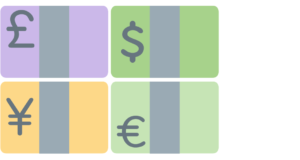Both Australian and Developed Market equities were stronger. The MSCI World (hedged into AUD) returned 3.8%. Equity markets were lifted by sentiment around easing trade concerns. Tensions in the Middle East intensified significantly in June with Israel’s attacks intended to dismantle the Iranian nuclear program. There were concerns that the conflict could spread (and therefore impact oil supply), but markets generally looked beyond the immediate Israel/Iran situation. A ceasefire was agreed before the end of June.

USA
The S&P500 returned 5.1%. This index was up nearly 11% over the previous quarter and up 6.2% over the year-to-date. US equities responded well to the continued easing in trade tensions. Corporate earnings also remained strong. At its June meeting, the US Federal Reserve kept the cash rate steady, although they will continue to watch out for any late impacts because of tariffs. President Trump indicated a desire to replace the US Federal Reserve’s Chair, Jerome Powell, due to the current slow pace of cuts.

Europe
The MSCI Europe Index (in EUR) underperformed broader Developed Markets (-1.4%). After a period of outperformance over the past 3-6 months, returns year-to-date are now in line with the USA’s S&P500.

Asia
All major Asian indices (China, Taiwan, Korea and Japan) were up. Korean equities were a clear outperformer. The inauguration of Korean President Lee Jae Myung in early June may have signalled to markets that a long period of political instability could be at an end.

Australia
Australian equities were up 1.4%. The Energy sector outperformed (8.9%). This was likely due to rising energy prices due to tensions in the Middle Eastern. Materials and Consumer Staples were the 2 weakest sectors.
Unemployment has now remained consistent at 4.1% for the whole of 2025. A high proportion of the new jobs being created are in the public sector, heath care and education (rather than the private sector).

Currency and bonds
Yields for US and Australian bonds fell, which was supportive to Global & Domestic Bonds Index performance. US 10-year yields ended June at 4.23% (falling 16bps), while Australian 10-year yields also finished the month lower at 4.16% (falling 11bps).
Most major currencies were stronger relative to the USD. There has now been underperformance of the USD relative to other major currencies over the last 12 months. The AUD has lagged compared to other currencies over the previous year. This may be driven by the tendency of the AUD to weaken during periods of market uncertainty and the more cyclical nature of the AUD. However, the AUD was stronger over June (1.8%).


